What is cloud computing and SaaS?
Currently, most business solutions are based on the client-server architecture. The user connects from his workstation to the company server with the transactional or analytical system. However, such a solution does not meet the criteria of a cloud solution, because in the simplest terms, cloud computing means storing and accessing data and programs via the Internet.
One of the models of cloud computing use is remote access to applications (Software-as-a-Service, SaaS) via a web browser. This means that there is no need to purchase hardware and software, install or maintain a system. Unlike in the case of on-premise solutions, it is the provider who is responsible for the entire scope of infrastructure and software management, including regular updates. It is the SaaS model that the SAP Analytics Cloud (SAC, originally called BusinessObjects Cloud) analytical platform operates in.
SAP Analytics Cloud is the only solution available on the market in the SaaS model to combine all three analytical capabilities: reporting, planning and prediction. The use of the cloud allows for unprecedented flexibility – the ability to quickly adjust (increase or decrease) the computing power depending on current needs. A monthly access fee adjusted to the level of resources used allows for minimizing the costs of hardware and IT services.
The system is available 24/7 from anywhere in the world on web-enabled devices. SAP Analytics Cloud is updated without the customer’s participation every two weeks, which increases the innovativeness of the solution – all platform updates (including new functionalities or error handling) are available on an ongoing basis, which is communicated to users with a clear message after logging in.
SAC vs. other SAP analytical solutions
So is SAC the successor to the SAP Business Warehouse or SAP BusinessObjects? What is the point of investing in SAC if we already have analytical solutions from the SAP stable?
The software architects from Walldorf have made sure that existing customers can continue to benefit from the solutions already implemented, and SAC expands the range of their capabilities. As part of live connections that do not require replication of data to the cloud, SAP provides the possibility of connecting to the HANA database, BW, BW/4HANA, S/4HANA and Universes of objects . In this way we can use existing datasets and their business logic (included e.g. in transformations in the warehouse or in the BEx query definition) for new reports, saving time for key users. In the case of S/4HANA, the SAC implementation process can be significantly shortened by using one of the predefined HANA views (Core Data Services) as the data source. Standard views can be modified both at the view definition level and at the level of the query created in the view. Additionally, SAP offers free, ready-to-use reports (content) dedicated to an industry (e.g. banking, health care, insurance, retail) or departments (e.g. finance, human resources, purchasing, project management). If more flexibility is required and it is necessary to merge data from different sources and to clean, unify and transform it, the user can import different sets of data into the cloud (e.g. from SAP ERP, BW, BPC, Google Drive or SQL databases).
There are no individual tools in the SAC platform – users can create their own reports in the form of storytelling or a managerial dashboard. The available planning or prediction functionalities depend on the selected connection type or data model settings rather than on the document or tool type. A single point of access and a single multifunction tool make the SAC adoption level higher than in the case of other analytical solutions. Recognizing the value of simplicity and unification and using the wide range of cooperation possibilities (e.g. creating a discussion in the context of a specific document), users do not create independent difficult-to-manage satellite systems in order to meet their information needs.
Security of data in the cloud
Cloud solutions wrongly raise concerns about the security of data stored in the cloud. From a technical point of view, our system is hosted in one of the certified (e.g. ISO 27001, ISO 9001, Green IT) SAP data centers, where strict procedures are in place to minimize human error.
Currently, SAP also enables SAC hosting within the Amazon Web Services or Google Cloud Platform (Microsoft Azure is to be included in the roadmap for 2019). Each of the centers has a rigorous security policy in place, comprising: backup systems, replications and readiness to restore the system from a backup copy, and ensuring an above-average level of availability thanks to proactive 24/7 monitoring of systems or multi-source power supply (including UPS and power generators). Access to our data is protected by firewalls and the connection to the customer’s domain is encrypted.
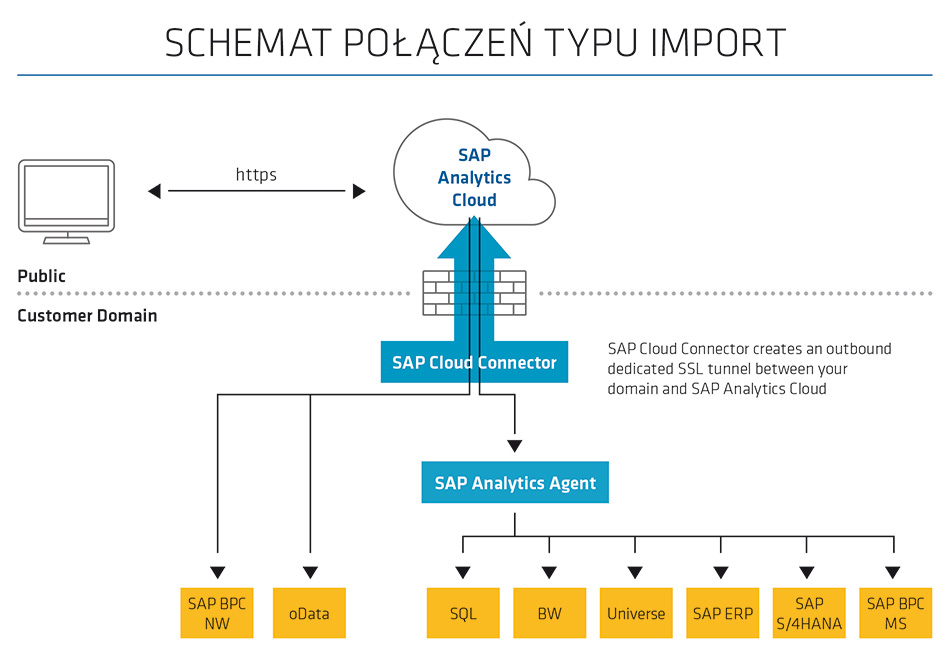
A good reporting solution
SAP Analytics Cloud is the only solution to offer a comprehensive solution for reporting, predicting and planning in the SaaS model, optimized in terms of integration and interoperation with other SAP products. This helps avoid data replication (in live connections), which greatly simplifies management and eliminates inconsistencies in reports. With “import" connections, the user gains unprecedented independence and flexibility in data processing, which can be used to meet ad hoc reporting needs or for prototyping.
Providing the timely information based on consistent data presented in a user-friendly and intuitive form, SAC is a step towards data- and fact-based management. The cloud is becoming a form of technical outsourcing of supporting functions. Leaving the key competencies of data analysis within the company, it allows you to focus on the core business that generates value for the company.
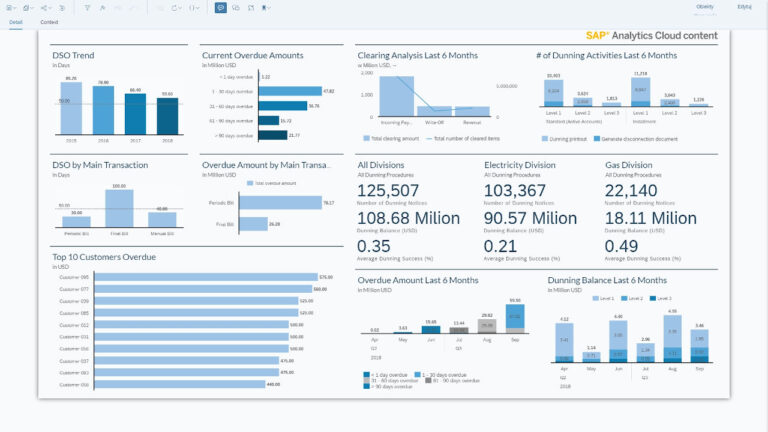
SAC Cloud Content, Financial Report: Analysis of Receivables
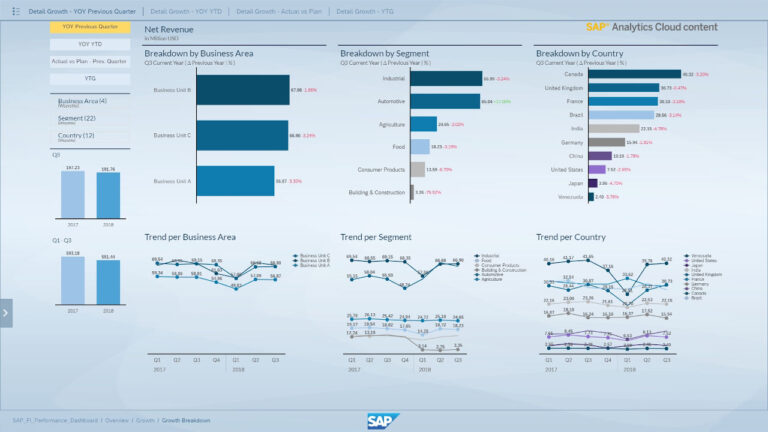
SAC Cloud Content, Financial Report: Financial Performance Overview
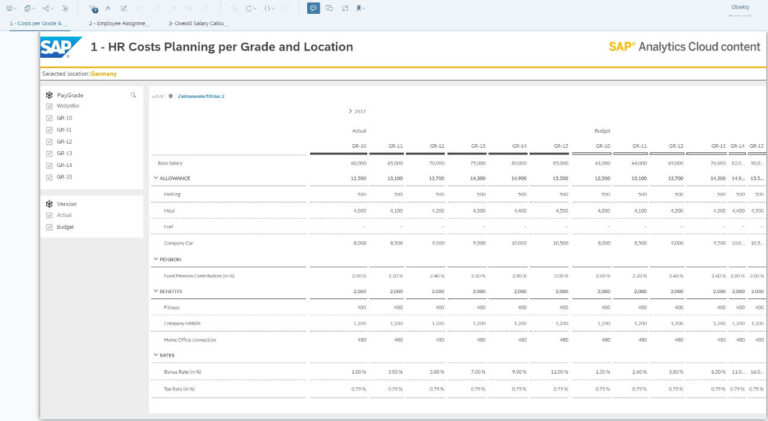
SAC Cloud Content, HR Report: Payroll Planning
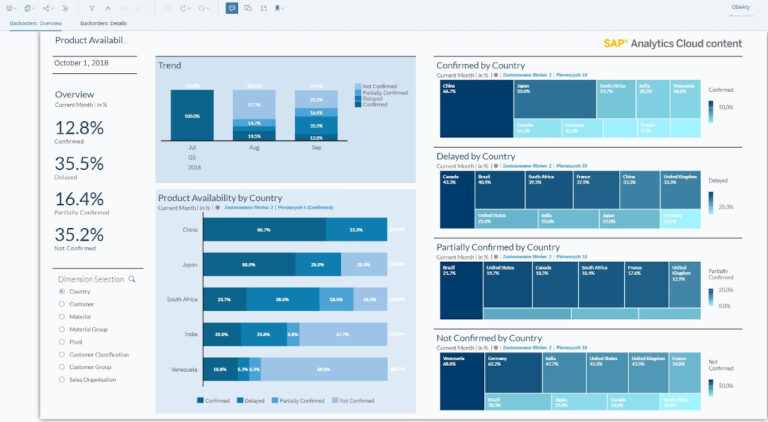
SAC Cloud Content, SD Report: Analysis of Outstanding Orders

